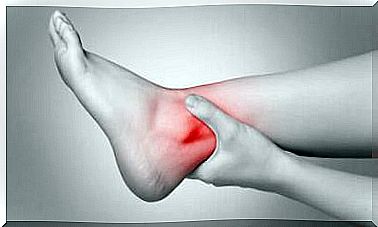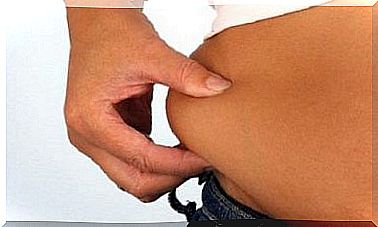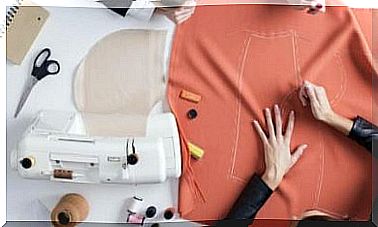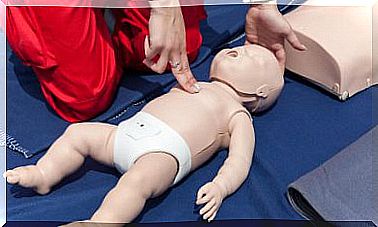How To Encourage Your Baby To Crawl? Some Useful Tips

You will probably be happy to encourage your baby to crawl . After all, the first years of his life are full of exciting and magical moments. Observing his progress and completing each milestone that passes makes his parents extremely proud. It is a source of constant celebration.
As a rule, babies begin crawling between the ages of 7 and 9 months. This will happen when the child is fully ready for it. In fact, they don’t need anyone to teach them how to do this. It is a completely natural reflex that a child acquires spontaneously. However, parents can help him stimulate those movements that will lead his child to set off on his own for the first time. So what’s the best way to encourage your baby to crawl ?
Crawling is the first great achievement in the psychomotor development of each of us. It is the first gesture of independence for every human being. This is the first time that every person can move from one place to another on their own. So this is the moment when you start to discover the whole world around you.
Before you start encouraging your baby to crawl, learn about his types
Specialists distinguish different types of crawling. Some of its forms are more basic, while others require much more fine motor skills from the child.
Also, not all babies crawl at the same pace. In addition, you must bear in mind that even if you think your child is somewhat more clumsy than others of the same age, it does not mean that he or she is also less intelligent.
It’s just that his motor development is a bit slower or in a different way (maybe your baby started doing other activities earlier than others?).

There are generally four different types of crawling:
- The first is the type of crawling that most closely resembles the crawling form. In this specific case, the child does not lift his body from the ground, but only moves forward with his hands, as does a soldier crawling on the ground.
- There is another way, a bit similar to the previous one. However, in this case, the child lifts the torso completely above the ground. He simply puts his hands on the ground and only moves his arms forward while keeping his legs straight.
- A third, also common, method of crawling is the simultaneous use of your hands and knees. In this case, the child is actually walking on all fours. This means that only his hands and knees rest on the floor.
- Finally, some children lift their torso completely and put their weight solely on their hands and feet. As you can guess, this type of crawling occurs by far the latest because it is the most demanding on the motor side.
How to correctly encourage a baby to crawl?
Why encourage your baby to crawl? Isn’t he learning to do it on his own? After all, in many cases babies learn to crawl on their own. However, they still need your support to let go of their fear and “go all out”. Here are some tricks you can test on your little one.
1. Let him play “on his stomach”
Babies usually sit with their backs against something and sleep on their backs as well. Therefore, placing them in a different position as soon as they are awake, which is on their stomach, stimulates a different set of movements, such as lifting the head.

At first, of course, your baby may feel uncomfortable. If that happens, don’t leave it in that position for too long. However, keep trying until he gets used to it. There are also many toys with which to take them so that they slowly adapt to their new position.
You can also lie on your back and place the baby on you, on your breast. Of course, in the prone position.
2. Place toys right in front of it so that your child can reach them
Once your baby is more comfortable lying on his stomach, you can move on. Just put a toy or any other object that arouses his interest in front of him, but out of his immediate reach. This will encourage them to move forward.
At the beginning, of course, your child will not be able to cope. So she may seem frustrated about it, but keep the toy away from him. You’ll soon see your baby find a way to crawl and reach her destination on her own.
3. You can encourage your baby to crawl by standing next to him on all fours
Children learn, among other things, by carefully observing their surroundings. If they see you crawling, they will know immediately that it is perfectly possible.
Of course, that doesn’t mean they will crawl as soon as they see you doing it. However, it will help them know that they can do it. This will give them tips on how to do it, which they will probably use in the near future.
Crawl with your baby. Always remember that babies learn by example.
4. Hanging toys can effectively encourage your baby to crawl – hang a few over him!
Toys hanging over your baby when they are lying on their back strengthen their shoulders and abdominal muscles.
Babies like color and movement. This is why cell phones are great entertainment for them.

So if you hang a few colorful toys over the crib, your baby will try to reach them. This means that during this activity she will be training the same muscles that she will use for crawling in the future.
5. Help your child assume the correct position
Roll up a towel or sheet and place the baby in a prone position by placing the rolled roll between his belly and his chest.
Then lift the towel by grasping both ends so that your baby’s torso rises slightly with it. Instinctively, it will then rest its hands on the floor. When he does, move the towel gently back and forth. Thanks to this, the child will know the effect of weight transfer back and forth.
You can also do this exercise by simply lifting your baby up by the hips with your hands.
What happens if your baby doesn’t want to crawl on its own?
Most babies crawl before they can walk on their own or even get on their feet with the help of their parents. However, many of them go directly from sitting down to standing up with support. This is perfectly normal.
In any case, if you find that your baby has difficulty crawling, consult your pediatrician just in case to find out if this progression in your baby’s motor skills is normal.









